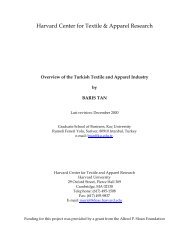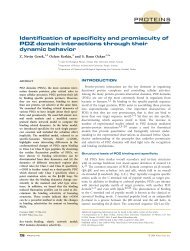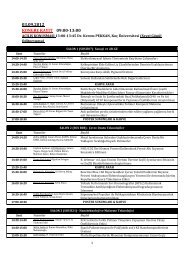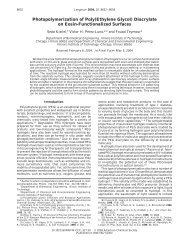Roman Landholding in Asia Minor Author(s): Thomas Robert ...
Roman Landholding in Asia Minor Author(s): Thomas Robert ...
Roman Landholding in Asia Minor Author(s): Thomas Robert ...
You also want an ePaper? Increase the reach of your titles
YUMPU automatically turns print PDFs into web optimized ePapers that Google loves.
Vol. lxv] <strong>Roman</strong> <strong>Landhold<strong>in</strong>g</strong> <strong>in</strong> <strong>Asia</strong> M<strong>in</strong>or<br />
227<br />
If African <strong>in</strong>formation is to be used to expla<strong>in</strong> the imperial<br />
estates <strong>in</strong> <strong>Asia</strong> it must be admitted for those of senators too.<br />
The Ormelian conductores may therefore belong to a large<br />
senatorial estate and do not <strong>in</strong>dicate that it was or had been<br />
imperial property.<br />
The size and population of these estates make no difficulty,<br />
for large villages on private estates were not uncommon.'00<br />
We f<strong>in</strong>d on a private estate at Coula of Lydia a village which<br />
the proconsul permitted to hold a monthly fair.'01 No <strong>in</strong>ferences<br />
can be drawn from the mention of 7rpoayovres <strong>in</strong> the<br />
Ormelian villages, for they do not recur except at Apollonia<br />
and Seleuceia Sidera on <strong>in</strong>scriptions no longer <strong>in</strong> their orig<strong>in</strong>al<br />
places.02 Our discussion of the Ormelian estates <strong>in</strong>dicates<br />
that they were senatorial rather than imperial properties and<br />
affords no good evidence that they had ever been public or<br />
fiscal land.<br />
The case for imperial ownership of the adjacent estate of<br />
Alastus 103 is based upon the mention of conductores, of<br />
gendarmes (7rapacvXaKZraL), of estate guards (bpoovXaKes), and<br />
of "topoi about Alastus," topoi <strong>in</strong> this connection be<strong>in</strong>g supposed<br />
to mean "estates." One of the conductores, however,<br />
suits the hypothesis that this was a large private estate even<br />
better than those at Ormela, for he was a freedman of the M.<br />
Calpurnius Longus who has been considered, although he had<br />
no title, the imperial procurator. The supposition that Longus<br />
was the owner receives additional support from the appearance<br />
of his slave as oeconomus. S<strong>in</strong>ce the paraphylacitae were<br />
Pergamene police, they were thought to prove the cont<strong>in</strong>uity<br />
of development of these estates from Pergamene times; 04<br />
100 Corp. Agrim. ed. Thul<strong>in</strong>, p. 45; cf. for Africa, Broughton, op. cit. (<strong>in</strong> note<br />
87), 173 and 198.<br />
101 I.G.R.P. iv, 1381; perhaps another <strong>in</strong>stance, No. 1492, at Kasaba.<br />
102 Sterrett, Epig. Jour. No. 89; Wolfe Expedition (Papers of the American<br />
School of Classical Studies <strong>in</strong> Athens III, Boston, 1888), No. 465.<br />
'0 Sterrett, Epig. Jour. Nos. 78 f.; Ramsay, C.B. I, 1, 307 f., 321, Nos. 113-<br />
116; I.G.R.P. iv, 894-897.<br />
104 The paraphylacitae are found at Pergamum and phylacitae at Eriza <strong>in</strong> the<br />
2d century B.C.; Ditt. O.G.I.S. I, 338, 238; cf. Ramsay, C.B. I, 1, 256; Hirschfeld,<br />
Kl. Schr. 600-602.



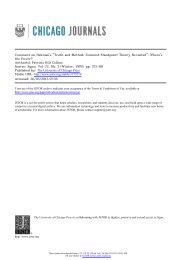

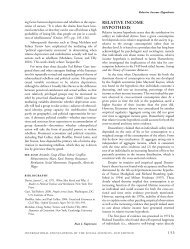
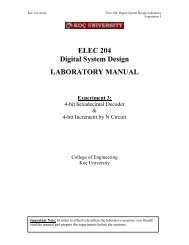
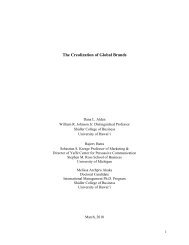

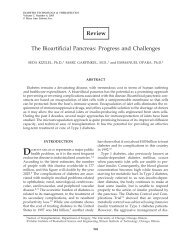
![]_[O](https://img.yumpu.com/10363126/1/190x138/-o.jpg?quality=85)
